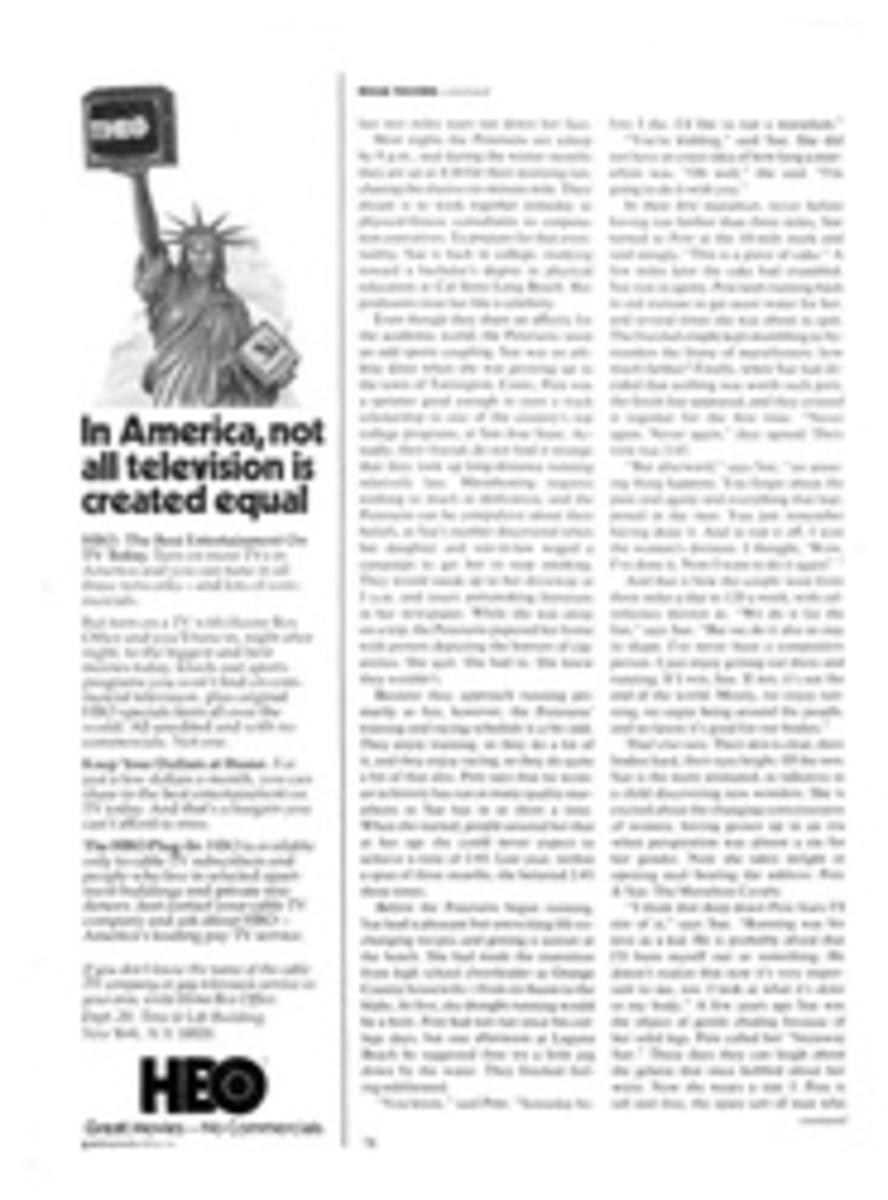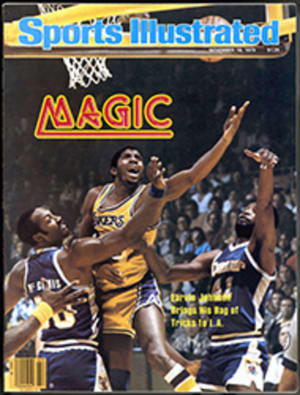
AT VERMONT TUBBS THEY STILL MAKE SNOWSHOES THE WAY THEY USED TO
Fred Cox spliced two moistened strips of raw-hide, drew the joint snug against the frame of the snowshoe he was working on, and wove it diagonally through a latticework of rawhide strips that looked like strands of flat, uncooked pasta. Cox, 67, was at work at the shop of Vermont Tubbs, Inc., Wallingford, Vt., one of the oldest U.S. snowshoe manufacturers, and as his fingers flew he reminisced. "I started lacing snowshoes in 1942, during the war," he said. "That was a busy time. We made thousands of shoes for the Army. I retired five years ago but I couldn't stand the inactivity, so I came back, part-time. I lace four pairs of shoes an hour. I just do the body of the shoe; the toe and heel sections are done by someone else."
Time for another splice, quicker than the eye could follow, and another strand threaded across the shoe. The 40 feet of rawhide Cox requires to lace the midsection of a 10-inch by 36-inch Green Mountain Bearpaw snowshoe comes from the skin of the water buffalo. The animal produces a hide of superior strength, but for the toe and heel sections—subject to less weighting and abrasion—common cowhide does nicely.
Almost half the snowshoes Vermont Tubbs sells today are laced with neoprene but Cox won't touch those. "I don't like the neoprene," he says. "It's harder to work with. You have to pull it real tight, but the rawhide will dry tight by itself.
"Anyway, two years ago I sat down and figured out how many snowshoes I'd laced since 1942 and I guess it was just about 80,000 pairs. I don't know how many I have done since."
Finished, he released the shoe from the clamping jig that held it nearly upright, put it aside and reached for the mate.
The frame of a Tubbs snowshoe is made by hand—as is the rest of the shoe—of white ash, straight, coarse-grain strips [13/16]ths of an inch square. The strips, tapered in the center, are steamed for two hours and then bent around a form. Two men working swiftly can bend an ash strip into the shape of a Green Mountain Bearpaw shoe, a Michigan, Alaska Trapper or Ojibway model, in less than a minute. After two days in a 140° drying room, the dried ash frames are ready to be mortised (to hold two crossbars), sanded and riveted to join the tapered ends at the heel or tail of the shoe. Those steps completed, deft fingers, like those of Fred Cox and the 20 or so other Tubbs employees at Wallingford, weave the webbing that can keep a 200-pound man afloat over drifts of fresh powder snow.
In such fashion, amid the good natural smells of wood, hide, sealers and varnish, Vermont Tubbs turns out 20.000 pairs of snow-shoes a year. Of those, more than half are Green Mountain Bearpaws, a Tubbs adaptation of an old Indian design, flat and broad amidships. The Green Mountain version is elongated, turned up at the tip, smoothly rounded at the heel. Because it's narrow and tailless, it's easy to maneuver, good for beginners and best for hiking through thickly wooded Eastern terrain.
The longer Michigan, Cross Country, Alaska Trapper and Ojibway styles all come with pointed tails, offer superior tracking stability and are better for dry snow in open country. The Ojibway, a monster shoe five feet long, has a pointed toe as well, and it's the one model made from two strips of ash.
When Hadwin Young, the Tubbs plant manager for the last 30 years, takes to the snowy hills and ridgelines above Wallingford, he wears an Alaska Trapper shoe, 10 inches wide by 56 inches long with a six-inch tip-up in front. "The Bearpaw is a lot easier to wear if you're rabbit hunting," Young says, "but my preference is a shoe with a tail. The tail acts as a rudder and keeps the shoe tracking straight."
The genesis of Vermont Tubbs is murky, even to Young and to Baird Morgan, who bought the company in 1968. Morgan knows it was started in Maine more than 100 years ago by a man named Tubbs, who later moved the business south to Vermont. But little else is known of Tubbs or his early shoes.
Morgan runs the company from Forestdale, Vt., 25 miles north of Wallingford, at a second Tubbs plant that manufactures, among other things, furniture with seats and backs laced like snowshoes. At Forestdale, a factory store selling mostly furniture seconds and imperfect snowshoes is located above a Laundromat. If you can find the store, there are bargains to be had. Normally the shoes retail from $66 for the Green Mountain to $76.50 for the Ojibway, bindings not included.
The newest, most expensive Tubbs shoe is an aluminum model that costs $120. A patent is pending on the design, called the Alum-A-Shoe, and it has earned a niche in local law enforcement annals. One night last winter a game warden, who happened to have a test pair of the new shoes, was riding through Forestdale with a police officer when a breaking-and-entering call came over the radio. The two drove to the scene and spotted tracks leading away from the house into the woods.
"Lemme have those snowshoes," said the officer, and he glided off after the perpetrator. Why, with wings like that on his feet, it took him no time at all to run down the floundering thief. An easy pinch.
Vermont Tubbs, Inc., Forestdale, Vt. 05745.

